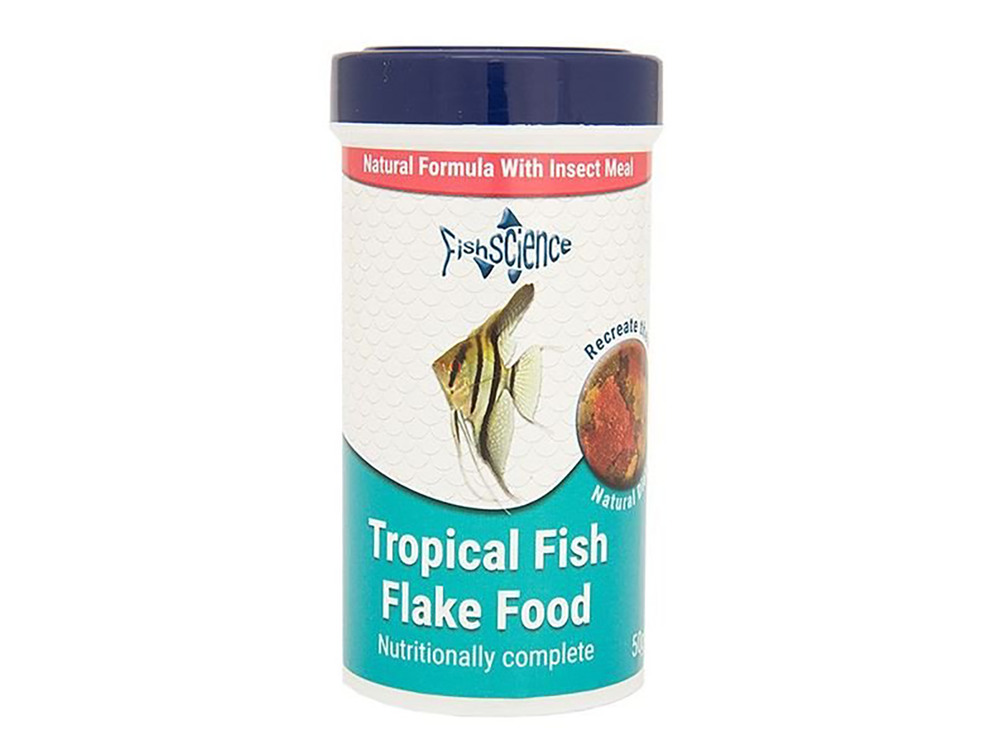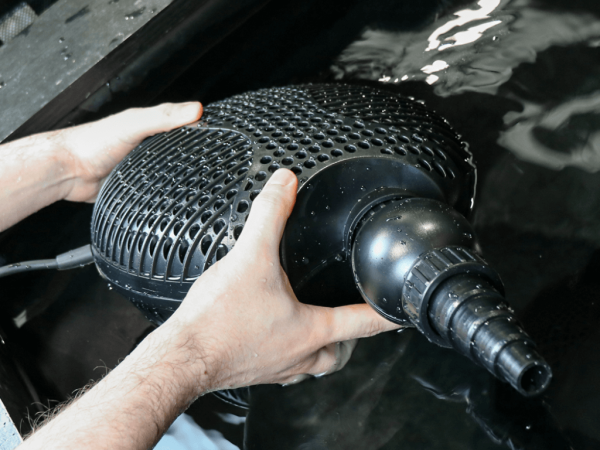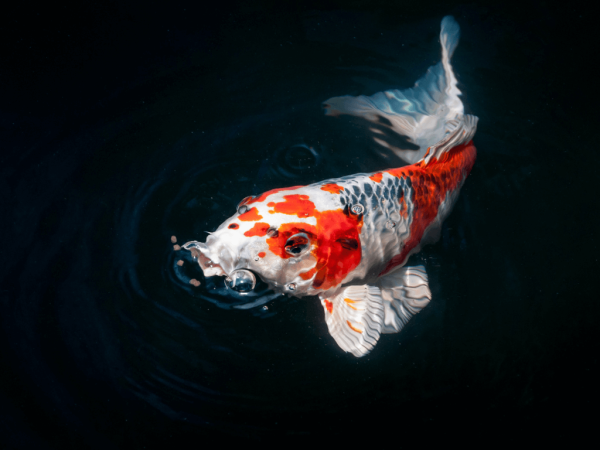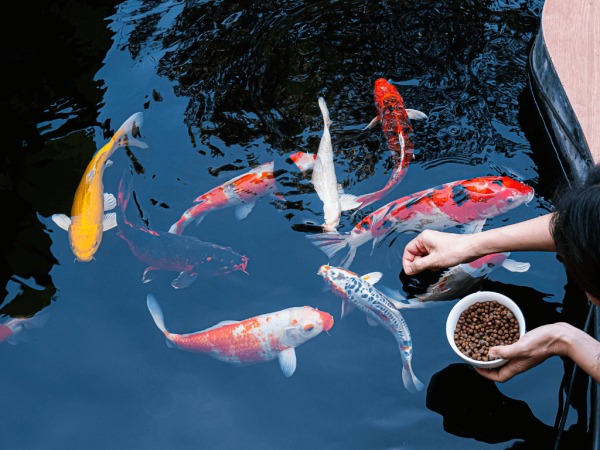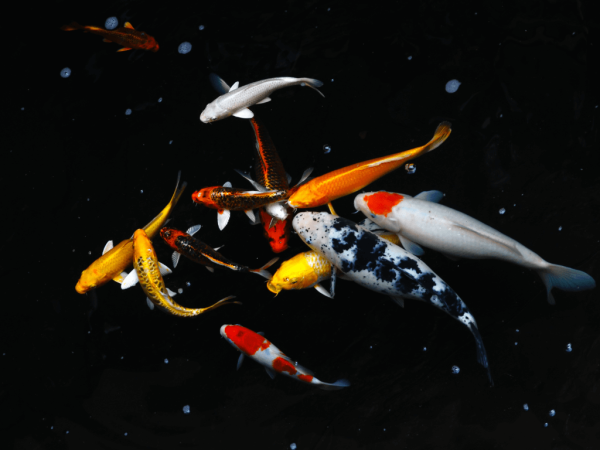Fish feeding advice – how, how much and how often?
When keeping an aquarium, fish feeding is one of those things that you want to get just right. Using the right methods, the right food, the right schedule and the right quantities can affect much more than just the basic nutrition of your fish, extending to tank-wide consequences if you get it wrong.
At Swell UK, we take hundreds of advice calls every week about fish feeding, and usually, it boils down to the next few categories of thought:
Tailoring the diet of your fish
First of all, the type of food you are feeding your fish needs to be considered. It is at the point that the most research needs to be done into the specific dietary requirements of the fish in your care, and also the place where many fish keepers fall down at.
For instance, a tropical, vegetarian grazing fish will have different requirements to a marine, carnivorous fish, requiring different amounts of protein, vitamins and other nutrients.
This is of course an extreme example, and a freshwater fish and a marine fish would not be kept in the same tank, but that’s the way you should try to think about it. Consider all the different fish in your aquarium and then choose a fish food that best suits all of their needs. In a lot of cases, the fish in your tank may be so diverse that several different types of food may be required to satisfy their needs – E.g. in a large marine tank, some fish will need top floating flakes made of algae, some will need brine shrimp, and the marine Beta at the bottom needs a tasty bit of crab meat or something similar to keep it happy.
Feeding times
Once again, this depends on the type of fish you are keeping and research is essential. For most tanks, however, the 2-minute rule is often a good one. Place the food, either in flake or pellet form into the tank, and allow the feeding frenzy to ensue for 2 minutes, then use a net to remove the uneaten food.
Most fish can satisfy their needs in this two-minute window and fill their stomachs until their next meal, and the removal of uneaten food stops them from getting obese.
But it also provides another important function. Uneaten food will often sink to the bottom of the tank over time, and begin to degrade and rot away. This releases ammonia into the tank water.
Ammonia is likely already present to some degree in your tank due to the waste created by your fish, but this extra ammonia is completely unnecessary and can cause havoc with your water chemistry, increasing pH levels, and causing algae blooms.
Removal of the food before it can enter the nitrogen cycle, therefore, becomes very important when you consider the effects on your tank as a whole, and therefore we highly recommend it where possible.
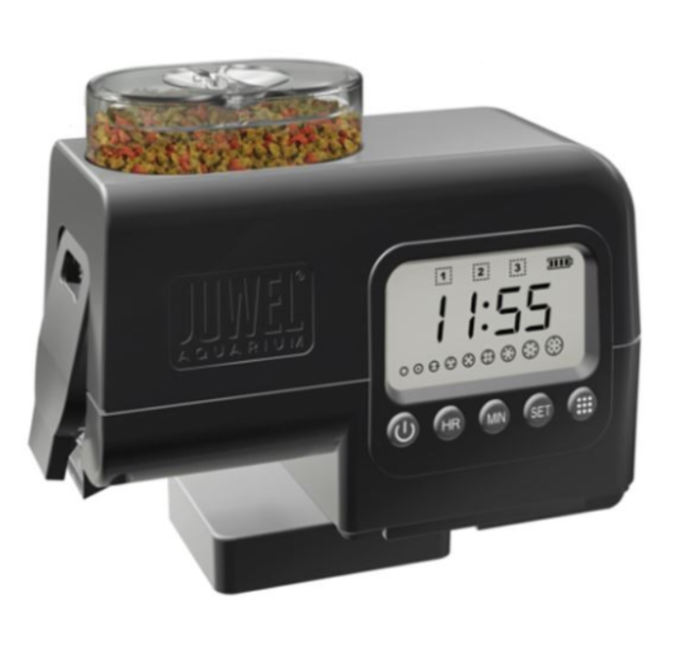
Autofeeders
If you think you know exactly how much food your fish are going to eat in a sitting, you can invest in an automatic fish feeder. Some aquariums have a specially made hatch for this, and others can be used as a hang-on feeder to automatically dish out your fish’s feed.
Perfect for holidays or while you are at work, they do however come with the disadvantage of only being able to reliably decant pellet type foods, as flakes tend to get stuck. They also don’t take care of the removal of waste food issue, so we recommend their use only when you know just how much food they will eat.




